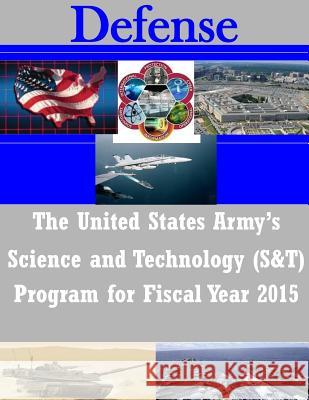The United States Army's Science and Technology (S&T) Program for Fiscal Year 2015 » książka
The United States Army's Science and Technology (S&T) Program for Fiscal Year 2015
ISBN-13: 9781505420869 / Angielski / Miękka / 2014 / 26 str.
The United States Army's Science and Technology (S&T) Program for Fiscal Year 2015
ISBN-13: 9781505420869 / Angielski / Miękka / 2014 / 26 str.
(netto: 57,14 VAT: 5%)
Najniższa cena z 30 dni: 60,00
ok. 16-18 dni roboczych
Bez gwarancji dostawy przed świętami
Darmowa dostawa!
After twelve years of persistent conflict, the United States finds itself in a familiar situation - facing a declining defense budget and a strategic landscape that continues to evolve. As our current large-scale military campaign draws down, the United States still faces a complex and growing array of security challenges across the globe as "wars over ideology have given way to wars over religious, ethnic, and tribal identity; nuclear dangers have proliferated; inequality and economic instability have intensified; damage to our environment, food insecurity, and dangers to public health are increasingly shared; and the same tools that empower individuals to build enable them to destroy." Unlike past draw downs, where the threats we faced were going away, there remain a number of challenges that we still have to confront - challenges that call for a change in America's defense priorities. Despite these challenges, the United States Army is committed to remaining capable across the spectrum of operations. While the future force will become smaller and leaner, its great strength will lie in its increased agility, flexibility, and ability to deploy quickly, while remaining technologically advanced. We will continue to conduct a complex set of missions ranging from counterterrorism, to countering weapons of mass destruction, to maintaining a safe, secure and effective nuclear deterrent. We will remain fully prepared to protect our interests and defend our homeland. The Army depends on its Science and Technology (S&T) program to help prepare for the future, mitigate the possibility of technical surprise and ensure that we remain dominant in any environment. The Army's S&T mission is to foster discovery, innovation, demonstration and transition of knowledge and materiel solutions that enable future force capabilities and/or enhance current force systems. The Army counts on the S&T Enterprise to be seers of the future - to make informed investments now, ensuring our success for the future. The Army is ending combat operations in Afghanistan and refocusing on the Asia-Pacific region with greater emphasis on responses to sophisticated, technologically proficient threats. We are at a pivotal juncture - one that requires us to relook the past twelve years of conflict and capitalize on all the lessons that we have learned, while we implement a strategic shift to prepare for a more capable enemy. As the Department of Defense prepares for the strategic shift, the Army will adapt - remaining an ever present land force - unparalleled throughout the World. We are grateful to the members of this Committee for your sustained support of our Soldiers, your support of our laboratories and centers and your continued commitment to ensure that funding is available to provide our current and future Soldiers with the technology that enables them to defend America's interests and those of our allies around the world.
Zawartość książki może nie spełniać oczekiwań – reklamacje nie obejmują treści, która mogła nie być redakcyjnie ani merytorycznie opracowana.











